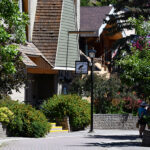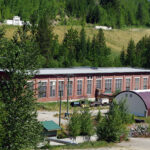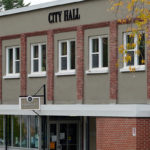Home »

Late summer traffic surge adds to risk for roadside workers
Drivers asked to slow down, keep eyes on road instead of phone
The combination of hot weather, holiday weekend travel, and back-to-school routines requires extra patience and care from drivers to help keep roadside workers in B.C. safe.
More vehicles, and more drivers in a rush or travelling unfamiliar routes, mean greater risk for the tens of thousands of British Columbians who work within metres of moving traffic. Distraction, especially from phones, and heat-induced stress add to the danger.
“We’ve all got to keep our eyes on the road and be aware of everything going on in roadside work zones,” said Trace Acres, the Kelowna-based spokesperson for Road Safety at Work’s Work Zone Safety campaign.
Drivers may be on the road with family or on their way to see friends. The campaign encourages them to remember that roadside workers have family and friends too, waiting to see them at the end of their workday.
“Every year, we hear about near-misses — or worse — in work zones because a driver was driving too fast or looking at their phone instead of the road,” Acres said. “A moment of inattention can change someone’s life forever.”

From 2015 to 2024, nine roadside workers in B.C. were killed and 267 more were injured seriously enough to miss work.
Chris Ruddick, an operations manager with a contracting company in Greater Victoria and a member of the Island Equipment Owners Association, sees the risks firsthand.
“Most drivers follow directions, slow down, and are respectful,” he said. “But it’s still common to experience drivers who just don’t relate to how dangerous it is for workers doing their job beside passing traffic.”
He says drivers are better able to recognize roadside work zones thanks to signage, traffic cones and barriers, and crews in high-visibility gear. A newer tool is also helping. Ruddick’s company uses Automated Flagger Assistance Devices (AFADs), remote-controlled flagging systems with gates and flags, to help reduce worker exposure to moving traffic.
Many different workers can be found in roadside zones, from traffic control persons and tow truck drivers to utility crews, landscapers, and road maintenance teams. Others, such as paramedics, moving crews, and delivery drivers, also frequently work near or on roads.
“I wish all drivers would understand that the workers occupying the roadways are just doing their job and for some of them, that job is to help keep motorists safe,” said Ruddick.
“For others, their job benefits the people driving those cars: garbage and recycling are being collected, landscaping is being done, sidewalks are being improved, drains are being unclogged, etc.”
The Work Zone Safety campaign urges drivers to follow three simple rules in work zones:
Slow down and drive at or below the posted speed limit;
Pay attention and leave your phone alone;
Obey all traffic signs and flag persons.
Construction speed limits are in effect even when there are no workers present. And even if a work zone looks empty, don’t assume it’s inactive.
Crews may be setting up, packing up, or just out of view, says Acres. “The safest driving decision is to treat every work zone like someone’s life there depends on your care, because it might.”
Drivers also need to follow B.C.’s “Slow Down, Move Over” law. When a vehicle with flashing red, blue, white, or amber lights is at the roadside, drivers need to lower their speed and move over when safe to do so.
For more tips on driving safely in work zones, visit RoadSafetyAtWork.ca.
e-KNOW file photo







